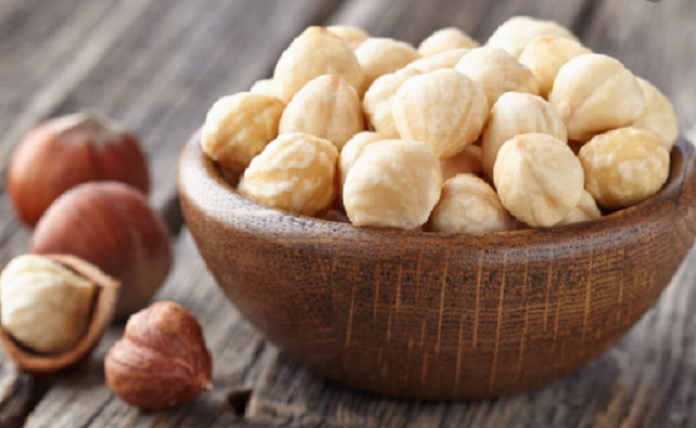Kemiri or candlenuts is one of the ingredients used to make spices in Indonesian cuisine. Besides being used for cooking, candlenut also has health benefits. The facts on kemiri is pretty impressive, ranging from the history to how it’s used in everyday life.
Here are the facts on Kemiri or candlenuts:
- History of candlenuts
Until now it is not known for sure where the candlenut plant came from. However, it is stated in the book “Spices, Seasonings, and Indonesian Cuisine Accompaniments” by Murdijati Gardjito that candlenut is said to have originated from Malaysia. Thanks to its hardy tree, candlenut quickly spread in other areas, both with high rainfall and sandy soil to various areas around the islands of Fiji or the Pacific Ocean to Africa.
- Candlenut belongs to the macadamia nut group
Indonesian candlenut or Aleurites moluccana is categorized as a type of macadamia nuts. The shape of the two at a glance is also almost similar. Both have hard shells that are wrinkled and yellowish white in color, with the texture of the seeds a little hard. However, the taste of macadamia nuts and candlenuts is very different.
- Other names for kemiri
Kemiri has many other names, such as candlenut, indian nut, kukui nut, and also candle berry. Some regions in Indonesia also call candlenut by different names. Such as sapiri (Makassar), ampiri (Bugis), bintalo dudula (Gorontalo), sakete (Ternate), and hagi (Buru). Then kereh (Aceh), hambiri (Batak), buah kareh (Minangkabau), muncang (Sunda), komere (Madura), kameri (Bali), and kemiri (Java).
- Nutritional content for candlenuts
Candlenut has a fairly high fat content, which is about 60 percent. This is what makes candlenut give off a savory taste. Citing the book “Spices, Seasonings, and Indonesian Cuisine Accompaniments” by Murdijati Gardjito, the nutritional content in candlenut includes: glycerides – 30 percent, linoleic, palmitic, stearic, and myristic acids. Then protein, vitamin B1, fatty acids (55-60 percent), and glycerin.
- Candlenut seeds contain poison
In addition to containing nutrients, candlenut also contains toxins with mild effects. This poison comes from the content of hydrocyanic acid in candlenut seeds. The toxic effect will appear if the candlenut is consumed raw and especially if consumed in large quantities. Some complaints that arise such as nausea, vomiting, and diarrhea.
- Candlenuts must be cooked before use
As previously mentioned, candlenut seeds contain toxins. Therefore, it is recommended to cook the candlenut before use. You can do this by roasting until brown. Or, burned using a portable torch. In addition, you can bake candlenuts in the oven for one hour at 160 degrees Celsius.
- Candlenuts add flavor to food
By using candlenut, the dishes taste more delicious. You can use candlenut to cook soupy dishes, such as sayur lodeh (vegetable soup in coconut milk) and stews. It is worth mentioning that candlenut can thicken soups and gravy. No wonder candlenut is also used to thicken curries in Malaysian dishes.
- Candlenut can strengthen the aroma of cooking
In addition to being delicious, dishes that are added with candlenuts also have a stronger aroma. You can use candlenut for soup or even stir fry. Keep in mind that the candlenut must have been roasted or roasted first before being mashed with other kitchen spices to avoid toxic substances in it. Make sure not to use too much of it too so that it does not taste bitter.
- Candlenut should be yellowish in color
There are two candlenuts that are commonly sold in the market, namely white and yellowish. It’s better to choose a yellowish color because white candlenut actually contains bleach, aka not the original color. In addition to paying attention to the color, smell the candlenut aroma to check its quality. A good candlenut will give off a strong nutty aroma.
- White powder on candlenut surface
Have you ever seen a pecan seed with a powdery surface? This white powder is a sign that the candlenut is old. Avoid choosing candlenut with characteristics like this because it will usually smell quickly. When used for cooking it also becomes less delicious. In addition, also avoid choosing candlenuts that break easily. One of the characteristics of high quality candlenut is its hard texture.
- Store candlenuts in a closed container
So that it is not easily smelly and mold, candlenut must be stored in a closed container. Before being stored, candlenuts can be roasted first. You can also store hazelnuts in the refrigerator or freezer.
- Candlenut shelf life
Candlenuts stored at room temperature should be used a maximum of one week after purchase. If stored in the refrigerator, candlenut will last up to one month. It will last longer if you store it in the freezer. Candlenuts will last up to one year, provided that it is stored in a closed container.
- Candlenut can be used as hair oil
Not only delicious food, candlenut can also be used as hair oil. By using candlenut as a hair oil, your hair will look healthier, thicker, and naturally black in color. The use of candlenut on the hair can make it avoid hair loss and dandruff.
- Benefits of candlenuts for skin
Candlenut oil contains 42 percent linoletic acid and 29 percent alpha-linolenic acid. Both of these ingredients are useful for healing and protecting certain skin conditions. Use candlenut oil to treat sunburn, burns, eczema, cracked skin, and reduce itching due to insect bites.
Have you used candlenut in your cooking? Tell us your experience in the comments section below!






